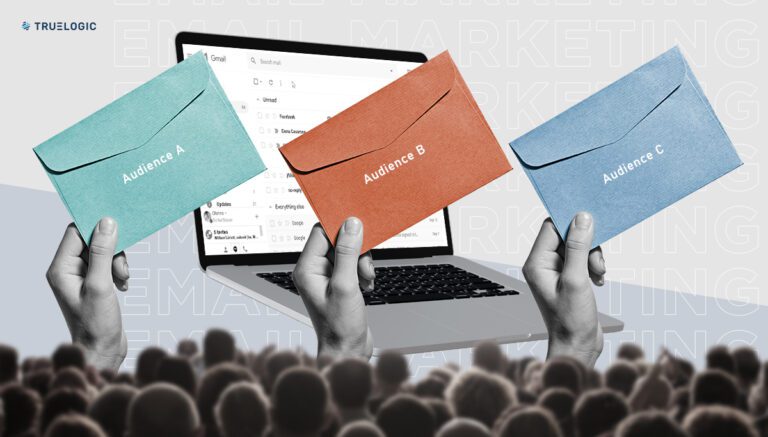The Ultimate Guide to Effective Email Marketing

Email marketing has been around since 1978 and continues to be used by thousands of companies all over the world, and for good reason. Despite its early beginnings and the rise of newer online channels like social media, email marketing remains an effective way to directly connect with leads, nurture them, and convert them into paying customers.
But how exactly do you track the success of your email marketing strategy?
The phrase “tracking emails” in the context of email marketing varies in meaning to different people. For instance, if you’re a marketer offering digital marketing services, you want to learn how to track emails so you can monitor its performance and analyze the bottom-line results. But for people in sales, often they track emails directly from the inbox to efficiently follow up with leads and clients.
The end goal, however, is similar: You want to know the people opening your emails, when they’re opening them, and the actions they take after opening them.
In this article, we guide on the journey to understanding the complexities of email marketing, its benefits, metrics you have to monitor, and how to track your results so you find ways to improve the performance of your strategy.
What is Email Marketing and How Does it Work?
First things first, let’s discuss the meaning of email marketing. The basic email marketing definition is that it is the process of targeting your audience and customers through email. Through effective and engaging content that compels subscribers to take action, you can convert prospects into customers, and casual one-time buyers into loyal patrons or even brand ambassadors.
It’s not spam, a personal note from a colleague, or a reminder from your friend about brunch on Saturday. You use email marketing to build upon an existing relationship with your subscribers and leads by providing them with valuable and relevant information that helps them take action on their goals. If used right, effective email marketing can both build relationships and profit at the same time.
There are many ways to use email marketing. Some classic uses of email marketing or examples of tactics include:
- Relationship building: Cultivating relationships through personalized messaging and engagement.
- Boosting brand awareness: Many email marketing examples keep companies and their services top-of-mind when prospects and leads are ready to engage.
- Content promotion: Email marketing is often used to share relevant blog articles with subscribers.
- Lead generation: A way to obtain personal information from subscribers in exchange for promos, discounts, or other assets they’d find valuable.
- Promotion of products and services
- Nurturing leads: Delight subscribers with content that helps solve their problem or succeed in their goals.
What are the Advantages of Email Marketing?
With popular online channels like social media on a steady rise, some people ask: Is email marketing still useful and effective?
The short answer is yes, definitely.
Today, email marketing remains the most trusted and effective form of communication, with 78% of marketers seeing an increase in email engagement over the past 12 months. When it comes to B2B marketers, 31% claim that email newsletters are the best way to nurture leads. Many consumers say that marketing emails influence their purchase decisions, and a good chunk of marketers have stated that email is their biggest source of ROI and increases in customer retention.
What are the reasons for the advantages of email marketing?
Unlike other marketing channels, email marketing lets you keep in touch with customers on a regular, consistent basis. When you send them targeted and personalized content, you let them know that you value them as customers. In turn, they love it when businesses treat them as individuals, not just as sources of profit.
Email marketing allows you to reap the following benefits:
- Better brand recognition: Email marketing is a great way to develop brand identity as it gives you a direct passage to the inboxes of your prospects and customers.
- Boost sales: Customers often act on impulse when they find out through email that specific products are on promo. Sending promo codes and email coupons can also boost your revenue.
- Stronger customer relationships: A drip marketing campaign drives subscribers down the buyer’s journey so they reach the final conversion point. These emails slowly drip valuable information, tips, or products over a period of time — providing constant value to readers while helping keep your brand at the top of their minds.
- Save on time and budget: Designing a professional email marketing campaign is easy, cost-effective, and time-efficient. It’s ideal for small businesses with time and budget constraints, as well as established enterprises who want another source of revenue.
How to Create an Email Marketing Strategy?
With the massive potential and vast possibilities of email marketing, let’s break down a few key steps so you can build a solid campaign to delight both prospects and customers. It’s keen to note that each of your customers receives a bunch of emails every day, including ones from your competitors. If you don’t develop a strong email marketing strategy, you’ll get lost in crowded inboxes or worse, even end up in the spam folder.
Here’s a sample on how to build an effective email marketing campaign and send emails that people will click on and read.
- Define your audience: Like everything else in marketing, create a buyer persona. An effective email is a relevant email so it’s important you understand what your target audience wants so you can tailor your campaign to address their concerns.
- Establish your goals: Gather some context by researching on your industry’s average email stats. You can use those as benchmarks for your goals. Mailchimp has a comprehensive table that lists all the email marketing benchmarks and statistics by industry.
- Get people to sign up: Build your email list using lead magnets such as eBooks, infographics, webinars, and other pieces of content. In exchange for the content you provide, they’ll need to give you their email address. You can also create an enticing opt-in form that lets them voluntarily sign up for your newsletter.
- Make a schedule: Decide how often you want to send emails to your contact list. Stick to a consistent schedule so you stay top-of-mind.
- Track and measure your results: As marketers, it’s crucial to measure the metrics and KPI’s of your campaign. Head over to the next section for the key metrics to monitor.
Email Marketing Metrics to Monitor and How to Track Them
At the end of the day, it doesn’t matter how much you’ve optimized your emails if they’re not giving you the results you want. Let’s take a look at the major email marketing metrics you should be tracking and how to measure them.
Open Rate
After you send an email, knowing how many recipients actually opened it is important. It not only lets you know if your subject lines are attention-getting, but it’s the first step to connecting and engaging with your email list. Depending on your industry, the average open rate for an email marketing campaign lies between 15% to 25%. Anything below this range requires you to re-work your subject lines.
Tracking open rates is important as the metric reveals trends over time. For instance, do subscribers open fewer emails during a certain day or hour? Open rates also help reveal which types of emails garner the best response from recipients, allowing you to put more focus on those types of messages in the future.
How to calculate it: Total number of emails opened ÷ number of emails sent
Clickthrough Rate (CTR)
Clickthrough rate is the percentage of recipients who clicked on one or more links in your email. CTR is a crucial email marketing metric as it gives you direct insight into how many people are engaging with your content, letting you easily calculate performance for each email you send. It’s necessary for determining the quality of your content and to see if it compels subscribers to take action. According to Campaign Monitor, 4% is the average CTR across all industries.
How to calculate it: (Total clicks or unique clicks ÷ number of sent emails) x 100
Bounce Rate
Bounce rate refers to the percentage of the total number of emails sent that couldn’t be sent successfully to the subscriber’s inbox. There are two kinds of bounces to track: “soft” and “hard.”
Soft bounces aren’t a major problem as they’re the result of temporary issues with a valid email address, such as a problem with the recipient’s server or a full inbox. You can try re-sending the emails or wait until the server’s issue gets fixed.
On the other hand, hard bounces are the result of closed, non-existent, or invalid email addresses. Immediately remove hard bounce addresses from your email list as they can damage the reputation of your email sending address.
While bounce rates don’t directly impact your goals, it’s still important to look into them so that you don’t come off as a spammer in the eyes of an internet service provider.
How to calculate it: (Total number of soft/hard bounced emails ÷ Number of emails delivered) x 100
Conversion Rate
Conversion rate is the percentage of email recipients who clicked on a link within your email and performed a desired action, such as purchasing a product or filling out a lead generation form. For instance, if you sent an email offering subscribers the chance to download a free eBook, anyone who downloads it is considered a conversion.
If your goal is lead generation, conversion rates are crucial as they show you how successful your emails are at actually engaging prospects and generating leads.
How to calculate it: (Number of people who performed the desired action ÷ Number of total emails sent) x 100
Overall ROI
As with every marketing channel, you’ll need to know the overall return on investment for your email marketing campaign. This lets you and your sales team figure out how valuable email marketing is as a channel that drives tangible results for your brand.
Below is a basic formula to calculate ROI although there are several ways to calculate it depending on your type of business. It’s important to set your goals at the start so you know if you’ve reached your intended ROI for a given marketing campaign.
How to calculate it: [($/PhP in additional sales made – $/PhP invested in the campaign) ÷ $/PhP invested in the campaign] x 100
Does Measuring Email Marketing Metrics Matter?
Yes, of course. As a marketer, you want to monitor several metrics because if you don’t track the results of your email marketing campaign, you’re wasting the potential of your strategy. It helps you stay on top of important clients and hot leads. For instance, if someone opened your email multiple times throughout the day, it might be a good idea to send another one out to touch base. By monitoring and interpreting the results of your email marketing campaign, you also help deliver the best content possible to your recipients’ inboxes.
Tracking the metrics mentioned above should be done after every single campaign, whether it was a success or a failure. Over time, you can compare the metrics to identify problems, come up with solutions, and plan out better methods to resonate with your subscribers.
If you’re unsure how to track your emails or measure the results, your email marketing services provider can do it for you. They’ll track everything you need to make informed decisions about your email content – from open rates and bounce rates to CTRs and ROI. They’ll make it easy to analyze and interpret the results for you.
Learn More Foolproof Email Marketing Tips from Truelogic
Email marketing continues to evolve and adapt with the times without abandoning its core objective: to reach out to your audience in the most personal way. Now that you know how to start an email marketing campaign and the most important metrics to track, you have a better understanding of what makes a campaign successful.
But it doesn’t stop there. Email marketing is a continuous process, one that needs constant refining and fine-tuning.
For more email marketing tips, don’t hesitate to reach out to Truelogic today. As a leading provider of digital marketing services in the Philippines, we have the experience and the expertise to guide you on the journey to creating email marketing campaigns that generate conversions and increase ROI.
Contact Truelogic today.










